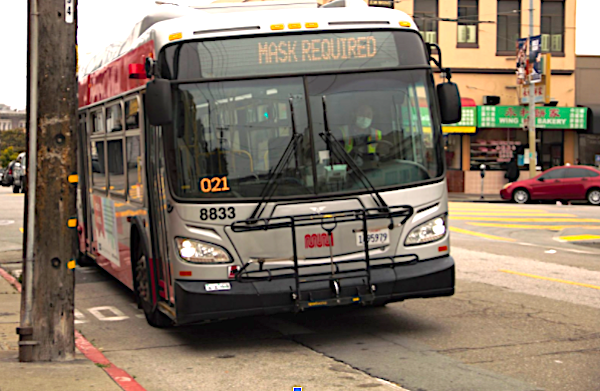I am a senior with a lifelong mobility disability. Too little has been voiced about the many different problems and burdens San Francisco’s MTA has imposed on people with disabilities and seniors, even with the draft service restoration plan.
Ninety percent of those with a mobility disability do not use a wheelchair; we don’t know how many wheelchair users have manual wheelchairs.
So it’s an obvious energy burden for PWDs, whether using a walker, cane, crutches, or manual wheelchair—to push themselves across Church and then uphill across five lanes of Market since the termination of the J-line.

Further, two changes made recently show that neither the MTA upper management nor the MTA board nor the Mayor’s Disability Council carefully looked over the intersection of Church, Market, and 14th for impediments to PWDS and to seniors.
Their joint and several negligence may result in injuries for which the City can eventually be held partly contributory or liable.
First, the elimination of the southbound stop—serving the 22 and the J lines—on the north side of Market means that any Safeway customer who is transit dependent on the 22 line has to:
a. cross multiple lanes of Market and of Church to get to the new south-bound stop serving the 22; or
b. trudge uphill with their bags or personal grocery carts to cross streetcar tracks and Church to get to a 22 stop on Church and Duboce.
This is a burden not only to PWDs with a mobility disability but to seniors, but also to any parent with a baby in a stroller and a bag or two of groceries in and under the stroller.
Second, there also are safety problems for all passengers— especially for PWDS, seniors, and adults with a baby in a stroller—with the “temporary” southside stop.
To get to that in-street stop, one has to cross a temporary wooden bridge.
The curb lane of this portion of the 200 block of Church does not allow for vehicular traffic; this prohibition is also applicable to bicycles.
More than once, when I have been on the bridge, I have been brushed back by a bicyclist blithely blowing through the “accessible path of travel” that is this wooden bridge.
I have seen other Muni passengers, including seniors, also dodge back or get brushed back by scofflaw bicyclists. Because there is a ramp up to and down from the temporary wooden bridge, MTA has granted bicyclists an implied “right-of-passage” across this temporary wooden bridge, even though the status of PWDS as a “legally-protected class” means we should have priority over bicyclists.
Two different operators have told me they were trained not to pick up passengers on the high boarding platform at Church and Duboce, stranding people with disabilities.
The current low platform has an electronic information sign showing arrival projections for the 22; yet the 22 stops at the curb. While it may be unfeasible to stop this electronic sign, certainly MTA could put up a sign informing waiting passengers to go to the curb for the 22.
MTA is ignoring safety for people in wheelchairs. I boarded a BREDA streetcar at the high boarding platform on Church and Duboce. The required flip-up small ledge was absent. This flip-up ledge was instituted by former MTA commission head H. Welton Flynn.
He, unlike all MTA board members nowadays, did respond to public comment and complaints—in this case about wheelchairs getting stuck due to the wide gap between the inside steps and the edge of a high boarding platform. The gap is several inches wide—enough for the front guide wheels of a wheelchair to fall down into the gap.
This gap also allows people using walkers and crutches to slip their mobililty equipment into it and also fall down.
There are other aspects of neglect shown by MTA in the draft restoration plan:
- The 2 line is the only line that directly serves UCSF Mt. Zion
from the western part of SF. The planned restoration of part of the western portion of the 2 line still prevents patients from the non-restored part of the line from directly getting to or from UCSF Mt. Zion.
- The failure to restore the Pacific Heights portion of the 10 line means there is no direct, flat service one block proximate to the Sutter/CPMC Hospital complex.
The draft restoration plan STILL makes it difficult to get needed medical care at two major health-care complexes.
Both the mayor and the supes.need to take concerted action to restore the J to underground service, and the 2 and the 10 to again bring patients to the medical institutions they previously served.
Bob Planthold has won awards from the SF Mayor’s Disability Council, Caltrain, CalTrans, the SF Paratransit Council, and shared in awards from the Metropolitan Transportation Commission for his advocacy on behalf of PWDS and seniors.



